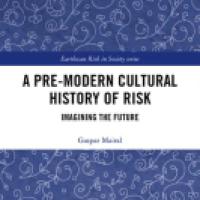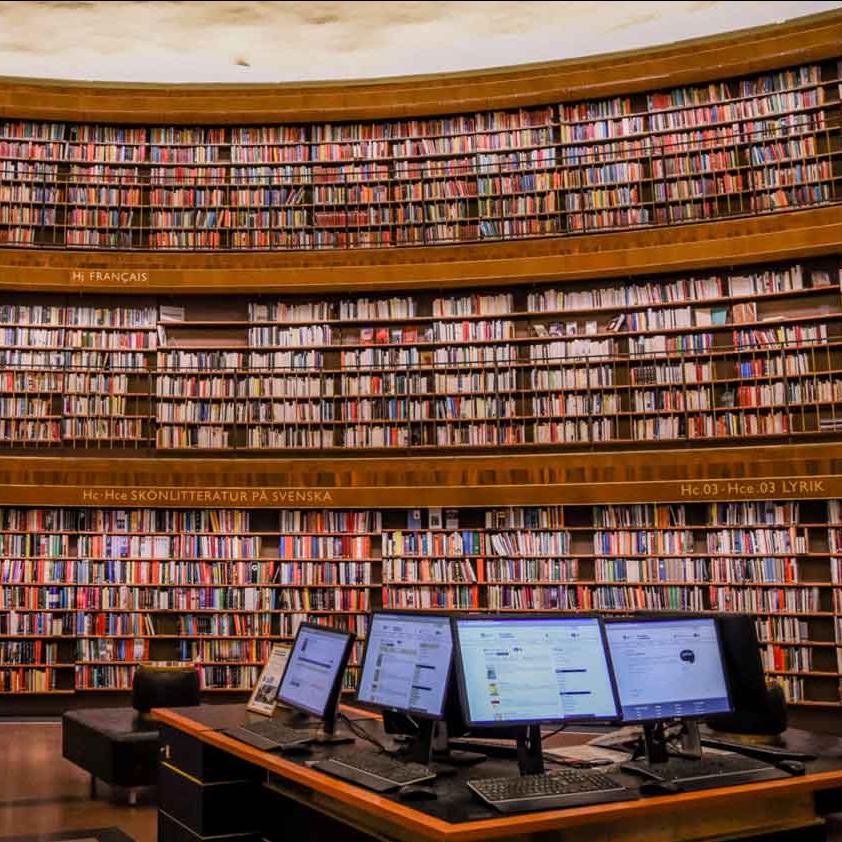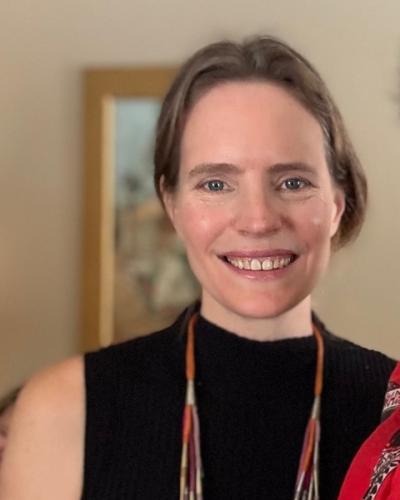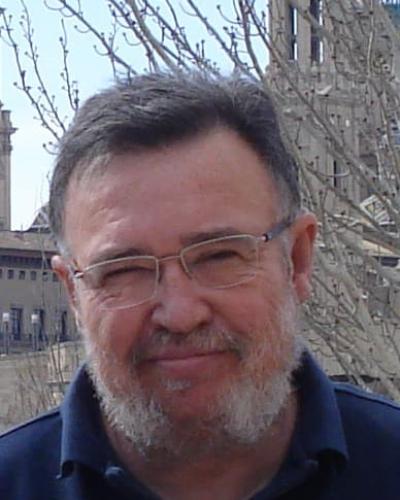This iteration of the Fellows' Q&A series features Gaspar Mairal, Professor of Social Anthropology at the University of Zaragoza, Spain, who was a 2012-13 "Risk" Society Fellow. His new book, Her new book, A Pre-Modern Cultural History of Risk: Imagining the Future (Routledge, March 2020), was released earlier this year.
Big Picture
The driving perspective of A Pre-Modern Cultural History of Risk is cultural-historical, which has yet to be a widely accepted point-of-reference in risk scholarship. Risk has traditionally been a way of imagining what could happen in the future based on expert theories and predictions. I had reached a point in my research at which I was convinced that risk is not perception, but knowledge accrued and developed over a vast historical time frame. In researching A Pre-Modern Cultural History of Risk, I explored the genealogy of risk and doing so I found how, from the seventh century on, risk has functioned as a narrative. The book answers the question of where the idea of risk came from and provides a contextual, long-term and interpretative analysis of risk from original sources. Tracking the growth and evolution of risk as a concept across various historical events, this book highlights four key features of risk: time, as risk is a way of representing the future; knowledge, since risk is sustained at least by a certain amount of knowledge; relationship, because risk is not a thing in itself but a relationship between things or entities; and finally, probability, the mathematical depiction of risk.
In Particular
9780367361853.jpg
Alt Text
A Pre-Modern Cultural History of Risk: Imagining the Future coverFor establishing this genealogy of risk, I turned to original written sources to trace the conceptual development of risk from its initial use by Islamic theology in the Koran. The Arabic “rizq” referred to the benefits that God bestowed upon good believers and their cargo before undertaking a long and uncertain voyage. From this first historical depiction of risk, the concept passed to medieval notarial Latin, with the expression ad meum risicum, ‘at my own risk,’ that often appeared in maritime contracts signed in Mediterranean port cities such as Genoa, Venice, and Barcelona. In the fourteenth century this formula was already essential in early examples of maritime insurance. In the fifteenth and sixteenth centuries, the concept of risk continued to develop through Portuguese and Spanish efforts to navigate the Atlantic, for example, in estimating risks of cargo loss by storms and pirates, risks of shipwreck and crew casualties. Columbus’s arrival and the subsequent Spanish conquest and colonization in the Americas showed the Spaniards a world full of riches but also hazards and dangers. They repeatedly employed in their accounts the Spanish word riesgo to describe hurricanes, volcanoes, floods, earthquakes, and Indigenous attacks. The new concept returned to Europe and was introduced in the English language in the seventeenth century, most interestingly in Daniel Defoe’s A Journal of the Plague Year, which I analyze in the book.
Then, in the eighteenth century, the famous earthquake in Lisbon became the “first modern catastrophe,” a landmark event for risk. Discussion about the cause of the earthquake ensued between those who believed it to be divine punishment for human sins and those who believed the earthquake a result of natural movements in the Earth’s crust. At the time, Voltaire and Rousseau were engaged in a philosophical debate about the origin of evil and, by extension, catastrophe as a natural phenomenon or one generated by humankind. The Lisbon earthquake also made apparent the political tensions between the prime minister Marquis de Pombal, Enlightenment thinkers, and Jesuits such as Father Malagrida, who was finally executed in an Auto da Fé. After the earthquake, authorities in Lisbon made prevention a priority, solidifying the concept of risk as paramount in for the reconstruction of the city. I emphasize here how, despite already being a “modern” catastrophe, the Lisbon earthquake points towards the concept of risk as one of the central motivations politically, philosophically, and culturally in modernity.
Discovery
When I started my research, I believed that the social construction of risk evolved out of the mathematical notion of probability first developed in the sixteenth century by Italian mathematicians such as Girolamo Cardano, and continued by Fermat and Pascal in the seventeenth century. My own conception of risk changed as my research advanced, and I came to think of risk not as a perception but as a conceptualization based in large or small part on probabilistic knowledge. Inspired by Ian Hacking’s work on the history of probability, I decided to research the history of risk. My discovery was that risk historically evolved from narrative to numerical calculus, and so the word existed before the number. This was just the opposite of my original idea.
My discovery was that risk historically evolved from narrative to numerical calculus, and so the word existed before the number.
I was also inspired by the deep genealogy of the concept of risk that takes us back centuries. It is fascinating how risk played a significant role in diverse historical scenarios and related to different activities. But I also found some commonalities in my research. Risk was often used to describe the challenges of traversing vast spaces such as deserts and seas and encountering natural disasters and disease along the way. The development of risk as a concept and a narrative runs parallel to many modern innovations and inventions such as the art of navigation, naval building, cartography, mercantile capitalism, insurance, descriptive statistics, journalism, etc. Finally, my research made clear the link between risk and globalization by tracing the spread of Islam as well as Portuguese, Spanish, and British histories of colonization.
Fellowship
My year at the Society was very fruitful for several reasons. The working atmosphere was superb and in a magnificent setting. My research needed an extensive bibliography and other sources that I could find quite easily in Cornell’s libraries or thanks to its quick exchange with other libraries in the country. To be surrounded by a group of colleagues, all of them interested in risk, encouraged me to go on with my own research. I have good memories of our Wednesday meetings and the following lunches, and of our debates and conversations. I received helpful feedback when I presented my work in the Fellows’ seminar. I was joined in Ithaca by my son who studied at Ithaca High School, which was for him an unforgettable experience. I just missed a stronger coffee!







